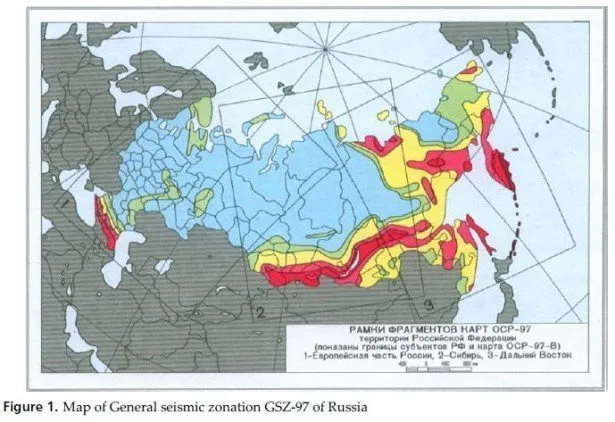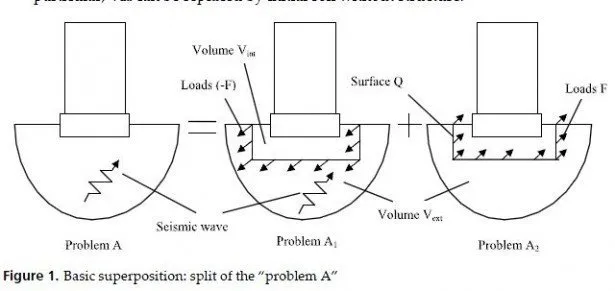As a rule, today probabilistic assessment of seismic hazard is used all over the world for the identification of seismic loads for the engineering projects. The probabilistic approach is a more systematized method for the assessment of quantity, sizes and location of future earthquakes (Bazzuro & Cornell, 1999; Cornell, 1968; McGuire, 1995) than any other methods. Formal procedures for the probabilistic assessment include the determinations of spatio-temporal ambiguities for the expected (future) earthquakes. The computer program EQRISK of McGuire became the main stage in the method development (McGuire, 1976).
The program became widespread and is very popular up to present day. In this connection the probabilistic assessment of seismic hazard is often called Cornell McGuires method. The program includes integration on ambiguities distribution.
The Caucasian region is characterized by high intensity of dynamic geological processes (McClusky et al., 2000) and hazards, connected with them, of both natural and technogenic character. The most clearly expressed among these hazards is seismicity, which is accompanied with wide range of secondary processes. Earth surface ruptures, activation of known earlier inactive faults, landslip phenomenon, collapses, avalanches, creep and subsidence of the earth surface, activation of surface structures, soil liquefaction and other hazardous phenomena can be noted among them.
The investigations on determination and parameterization of the seismic source zones in recent decades has been realized by V.P.Solonenko, V.S.Khromovskikh, E.A.Rogozhin, V.I.Ulomov, V.G.Trifonov, I.P.Gamkrelidze and others (Gamkrelidze et al., 1998;
Paleoseismology of Great Caucasus, 1979; Nechaev, 1998; Rogozhin et al., 2008; Trifonov, 1999; Ulomov et al., 1999).
On basis of the results of the active faults study located southward of the Great Caucasian ridge, parameters of seismic source zones were chosen according to data of I.P.Gamkrelidze work (Gamkrelidze et al., 1998) and to the north of the ridge they were chosen on data of E.A.Rogozhin and others (Rogozhin, 1997). According to the results of the executed expert evaluation of seismic potential (Ğœmax) the maps of seismic sources zoning of the territory of North Ossetia (zones of possible seismic sources – PSS zones) were made up.
A new original method of more accurate ascertainment of the boundaries of seismogenic source (fault) active part and assessment of the potential of seismic source hazard (at works of detailed seismic zoning DSZ) has been worked out in recent years (Rogozhin et al., 2008).
Lets consider the process of territory seismic hazard assessment for explanation of procedure usage by the example of the Central Caucasus (the territory of the Republic of North Ossetia-Alania).
PSS zones are referred to the active fault systems, singled out on a basis of interpretation of the materials of remote sensing and geological data. Decoding of multispectral three-channel space images of Landsat4/5 (resolution 30 m) and Landsat7 (resolution 15 m) was realized.
Decoding of space satellite photos was executed in colored multispectral variant as well as in black-and-white variant. Different variants of the image synthesis were used for the analysis of polyzonal scanner pictures. Besides, identification of the lineaments was also executed separately on channels. Combined deductive inductive approach was used for lineaments identification: integrated structures were decoded on the base of strongly generalized images with the following zooming in for detailing and vice versa local peculiarities of tectonic and exogenous structures with the following zooming out and generalization. The method of stepwise generalization was used with quantization on the scale levels 1:25000; 1:50000; 1:100000; 1:200000; 1:300000; 1:400000; 1:500000. In the scale range 1:25000 – 1:1 500000 space photomap on basis of snapshots Landsat-7 is used and in the range 1:500000-1:2 millions space photomap, created on basis of Landsat4/5 snapshots.
Extensive lineaments systems were identified with known faults, which were qualified on modern stage as active. The name of PSS zones was formulated on basis of faults and large settlements names. Morpho-kinematics of active faults is the base for qualification of seismic displacements kinematics in PSS zones. Hypocenters depth of expected earthquakes was calculated from the depth of fault plans, the depth on geophysical anomalies data and from the magnitude of expected events.
Maximum magnitude of expected earthquakes (seismic potential, Ğœmax) was assessed on the results of usage of the over-regional seismotectonic method of seismic hazard assessment, offered by G.I.Reisner. Usage of this method, foundation of which is described in the number of publications (Reisner & Ioganson, 1997; Rogozhin et al., 2001), showed that the Northern Caucasus is the region of very high seismic hazard.
In 2007 it was determined on data of field investigations that for the urbanized territories of North Ossetia the most hazardous are Vladikavkaz, Mozdok, Sunzha and Tersk PSS zones (table 1), (Fig.2) (Arakelyan et al., 2008; Rogozhin et al., 2008).Parameterization of seismic sources was made after creation of these maps, i.e. maximum possible magnitude Mmax for each seismic source was assessed. This is the most difficult problem in the process of parameterization of PSS zones. Mmax was determined on the data of a number of authors (Chelidze, 2003; Rogozhin, 2007).
The second essential parameter, which characterizes expected earthquakes, is sources depth range, where the majority of seismic events with corresponding magnitude generate.
According to the numerous investigations, Caucasus is the region with upper crust part location of seismic sources their depth doesnt exceed 2025 km (deeper seismicity is observed in Tersk-Sunzha zone in the area of Grozniy city and in Caspian Sea). As sources distribution on depth for this region wasnt executed, average value of depth (equal to 10 km) was taken for calculations (see table 1).





